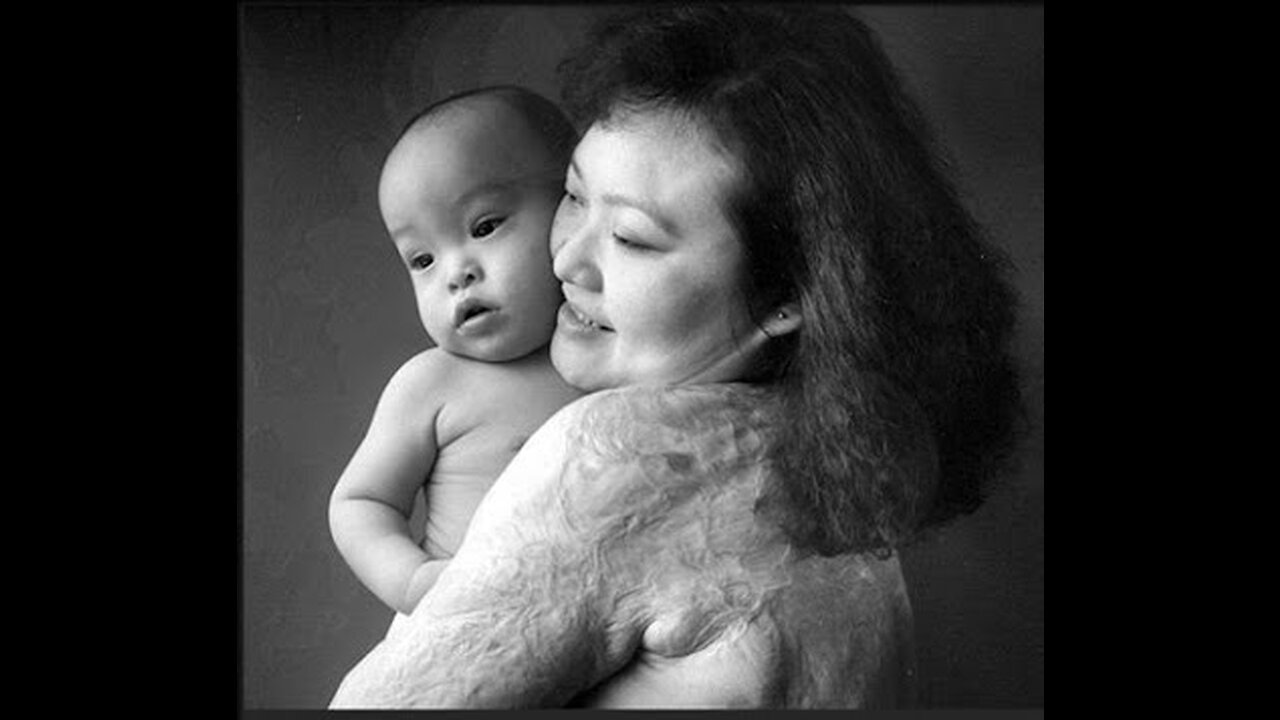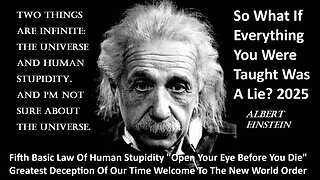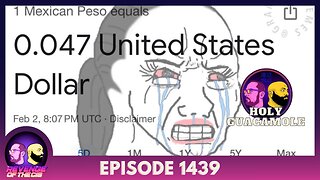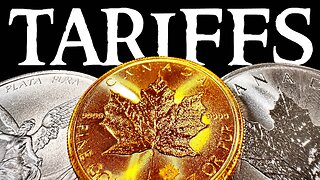Premium Only Content

Napalm Girl, Atomic Bomb, Agent Orange, and Gulf of Tonkin, Girls, Boys, and Family
The horrifying photograph of children fleeing a deadly napalm attack has become a defining image not only of the Vietnam War but the 20th century. Dark smoke billowing behind them, the young subjects' faces are painted with a mixture of terror, pain and confusion. Her name is Phan Thi Kim Phúc, but to many people, she's known as the Napalm Girl. She was only 9 years old when that photograph was taken by The Associated Press photographer Nick Ut, for which he won a Pulitzer Prize. That photo exposed the horrors of the Vietnam War to the world.
Napalm is used in combination with gasoline or jet fuel to make a bomb with a thin outer shell that easily explodes and ignites upon impact with a target zero. Burning napalm rapidly de-oxygenates the surrounding environment causing asphyxiation and high levels of carbon monoxide and carbon dioxide that can lead to toxicity. Burns are the most obvious harm, but the delivery of napalm may come from explosive delivery devices leading to blast-burn injuries.
The USS Maddox in the Gulf of Tonkin is shown in 1963. After a suspected torpedo attack by North Vietnamese patrol torpedo boats led to plans for US retaliation, the captain of the Maddox sent a cable to the Joint Chiefs that advised "complete evaluation before any further action" due to grave doubts over whether an attack had really occurred. President Johnson and his advisers never-the-less went forward with a public announcement of an attack. Johnson asked for, and received, a resolution of war from the US Congress that led to further escalation in the conflict.
The Gulf of Tonkin incident (Vietnamese: Sự kiện Vịnh Bắc Bộ), also known as the USS Maddox incident, was an international confrontation that led to the United States engaging more directly in the Vietnam War. It involved one real and one falsely claimed confrontation between ships of North Vietnam and the United States in the waters of the Gulf of Tonkin. The original American report blamed North Vietnam for both incidents, but the Pentagon Papers, the memoirs of Robert McNamara, and NSA publications from 2005, proved material misrepresentation by the US government to justify a war against Vietnam.
In the first few days of August 1964, a series of events off the coast of North Vietnam and decisions made in Washington, D.C., set the United States on a course that would largely define the next decade and weigh heavily on American foreign policy to this day. What did and didn’t happen in the Gulf of Tonkin on August 2 and 4 has long been in dispute, but the decisions that the Johnson Administration and Congress made based on an interpretation of those events were undeniably monumental.
While many facts and details have emerged in the past 44 years to persuade most observers that some of the reported events in the Gulf never actually happened, key portions of the critical intelligence information remained classified until recently.
In late 2007, that information was finally made public when an official National Security Agency (NSA) history of signals intelligence (SIGINT) in Vietnam, written in 2002, was released in response to a Freedom of Information Act request. With that report, after nearly four decades, the NSA officially reversed its verdict on the events of August 4, 1964, that had led that night to President Lyndon Johnson’s televised message to the nation: “The initial attack on the destroyer Maddox, on August 2, was repeated today by a number of hostile vessels attacking two U.S. destroyers with torpedoes…. Air action is now in execution against gunboats and certain supporting facilities in North Vietnam which have been used in these hostile operations.”
U.S. Government said and or told Us - We The People - Agent Orange - Yes It's Safe - The Chemical That Destroyed Generations. The U.S. defeated most of the resolutions, arguing that Agent Orange was not a chemical or a biological weapon as it was considered a herbicide and a defoliant and it was used in effort to destroy plant crops and to deprive the enemy of concealment and not meant to target human beings.
Agent Orange, mixture of herbicides that U.S. military forces sprayed in Vietnam from 1962 to 1971 during the Vietnam War for the dual purpose of defoliating forest areas that might conceal Viet Cong and North Vietnamese forces and destroying crops that might feed the enemy.
Agent Orange was a mixture of plant-killing chemicals (herbicides) used by the United States military during the Vietnam War as a defoliant to remove tree cover, destroy crops, and clear vegetation around US bases. About 3 million Americans served in the armed forces in Vietnam and nearby areas. Many of these veterans, as well as other people in the area, were exposed to Agent Orange.
Exposure to Agent Orange could have occurred when the chemicals were breathed in, ingested in contaminated food or drinks, or absorbed through the skin. Exposure might have been possible through the eyes or through breaks in the skin, as well.
One of the challenges in assessing the health effects of Agent Orange exposure has been determining how much an individual was exposed to (or even what they were exposed to). Very little information on this is available.
The Vietnam Memorial lists the names of more than 58,000 Americans who died. However, the wall does not document the names of the 2.8 million U.S. veterans exposed to the deadly chemical Agent Orange, and later died. Let's honor those who made the ultimate sacrifice during war - and because of war.
On August 6, 1945, during World War II (1939-45), an American B-29 bomber dropped the world’s first deployed atomic bomb over the Japanese city of Hiroshima. The explosion immediately killed an estimated 80,000 people; tens of thousands more would later die of radiation exposure. Three days later, a second B-29 dropped another A-bomb on Nagasaki, killing an estimated 40,000 people. Japan’s Emperor Hirohito announced his country’s unconditional surrender in World War II in a radio address on August 15, citing the devastating power of “a new and most cruel bomb.”
Hiroshima, a manufacturing center of some 350,000 people located about 500 miles from Tokyo, was selected as the first target. After arriving at the U.S. base on the Pacific island of Tinian, the more than 9,000-pound uranium-235 bomb was loaded aboard a modified B-29 bomber christened Enola Gay (after the mother of its pilot, Colonel Paul Tibbets). The plane dropped the bomb—known as “Little Boy”—by parachute at 8:15 in the morning, and it exploded 2,000 feet above Hiroshima in a blast equal to 12-15,000 tons of TNT, destroying five square miles of the city.
Hiroshima’s devastation failed to elicit immediate Japanese surrender, however, and on August 9 Major Charles Sweeney flew another B-29 bomber, Bockscar, from Tinian. Thick clouds over the primary target, the city of Kokura, drove Sweeney to a secondary target, Nagasaki, where the plutonium bomb “Fat Man” was dropped at 11:02 that morning. More powerful than the one used at Hiroshima, the bomb weighed nearly 10,000 pounds and was built to produce a 22-kiloton blast. The topography of Nagasaki, which was nestled in narrow valleys between mountains, reduced the bomb’s effect, limiting the destruction to 2.6 square miles.
At noon on August 15, 1945 (Japanese time), Emperor Hirohito announced his country’s surrender in a radio broadcast. The news spread quickly, and “Victory in Japan” or “V-J Day” celebrations broke out across the United States and other Allied nations. The formal surrender agreement was signed on September 2, aboard the U.S. battleship Missouri, anchored in Tokyo Bay.
Because of the extent of the devastation and chaos—including the fact that much of the two cities' infrastructure was wiped out—exact death tolls from the bombing of Hiroshima and Nagasaki remain unknown. However, it's estimated roughly 70,000 to 135,000 people died in Hiroshima and 60,000 to 80,000 people died in Nagasaki, both from acute exposure to the blasts and from long-term side effects of radiation.
NSA officials handed the key August SIGINT reports over to the JCS investigating team that examined the incident in September 1964. Those same reports were shown to the select congressional and senate committees that also investigated the incident. The entirety of the original intercepts, however, were not examined and reanalyzed until after the war.
The 122 additional relevant SIGINT products confirmed that the Phu Bai station had misinterpreted or mistranslated many of the early August 3 SIGINT intercepts. With that false foundation in their minds, the on-scene naval analysts saw the evidence around them as confirmation of the attack they had been warned about.
Those early mistakes led U.S. destroyers to open fire on spurious radar contacts, misinterpret their own propeller noises as incoming torpedoes, and ultimately report an attack that never occurred.
Despite the on-scene commanders’ efforts to correct their errors in the initial after-action reports, administration officials focused instead on the first SIGINT reports to the exclusion of all other evidence. Based on this, they launched the political process that led to the war’s escalation.
The Gulf of Tonkin Incident and many more recent experiences only reinforce the need for intelligence analysts and decision makers to avoid relying exclusively on any single intelligence source—even SIGINT—particularly if other intelligence sources are available and the resulting decisions might cost lives. Signals Intelligence is a valuable source but it is not perfect. It can be deceived and it is all too often incomplete. Like all intelligence, it must be analyzed and reported in context. People are human and make mistakes, particularly in the pressure of a crisis or physical threat to those they support. Perhaps that is the most enduring lesson from America’s use of SIGINT in the Vietnam War in general and the Gulf of Tonkin Incident in particular.
-
 3:00
3:00
What If Everything You Were Taught Was A Lie?
2 days agoFifth Basic Law Of Human Stupidity "Open Your Eye Before You Die" Greatest Deception Of Our Time
2.58K4 -
 1:54:36
1:54:36
Revenge of the Cis
3 hours agoEpisode 1439: Holy Guacamole
39.7K4 -
 1:01:50
1:01:50
In The Litter Box w/ Jewels & Catturd
1 day ago1 TRILLION! | In the Litter Box w/ Jewels & Catturd – Ep. 733 – 2/3/2025
51.3K31 -
 1:38:44
1:38:44
The Quartering
5 hours agoTrump's Tariffs Already Work, Blackhawk Pilot Coverup, DNC Makes Insane David Hogg Appointment
81.1K77 -
 LIVE
LIVE
Dr Disrespect
7 hours ago🔴LIVE - DR DISRESPECT - TARKOV - ZERO TO HERO RAIDS ONLY
3,153 watching -
 1:13:51
1:13:51
Candace Show Podcast
5 hours agoEXCLUSIVE! Did Ryan Reynolds Extort Hollywood Execs? | Candace Ep 143
112K135 -
 2:01:42
2:01:42
Darkhorse Podcast
5 hours agoA Germ of Truth: The 263rd Evolutionary Lens with Bret Weinstein and Heather Heying
33.4K10 -
 9:37
9:37
Silver Dragons
4 hours agoGoodbye Cheap Silver - How the Tariffs Will Change Stacking Forever
20K -
 37:33
37:33
CryptoWendyO
4 hours ago $2.68 earnedWORST DAY IN CRYPTO HISTORY $10 Billion in Liquidations!
32.9K8 -
 57:01
57:01
PMG
5 hours ago $2.15 earnedHannah Faulkner and Dr. Bryan Ardis | Don't Fall For the Bird Flu!!!
23.5K